
Orkney: the Earl’s Bu and some eventful Christmas feasts
Having written about St Magnus and his murder in 1116 by his cousin Haakon, who became the sole Earl of Orkney, I came across a couple of festive-themed stories that relate to Haakon’s successors, who were his sons Paul and Harald. When I say festive-themed, they involve jealousy and murder, but these people were Norse warriors, after all. They didn’t do Secret Santa.
The first tale is set in 1127 (although some sources say 1131), and it involves a Christmas feast held by Harald on his estate in Orphir. His brother, Paul, was in attendance, and with all their combined followers the company must have been quite large. The venue was a building called the Earl’s Bu (‘bu’ meaning ‘drinking-hall’), and it stood next to a round church that had been erected by Earl Haakon after his return from a pilgrimage to the Holy Land. The circular design is thought to have been inspired by the Church of the Holy Sepulchre in Jerusalem.
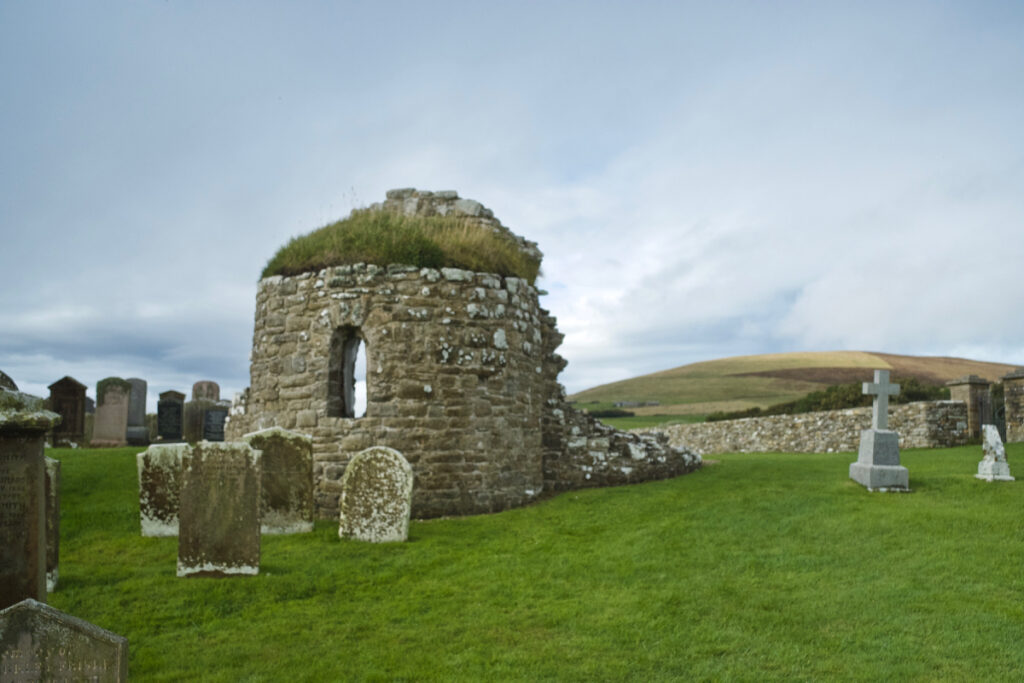
The remains of the Round Church at Orphir
Harald’s mother, Helga*, and her sister, Frakökk, had come to help with the preparations and busied themselves with needlework in a small room adjacent to the hall. Harald went to see them, and noticed a pure white linen tunic, beautifully embroidered with gold thread, lying on the floor. He picked it up and asked, ‘To whom does this splendid thing belong?’
Frakökk revealed that it was a gift for Harald’s brother, Paul. Harald replied: ‘Why do you make such a fine garment for him? You do not take such pains in making my clothing.’ Then he went to put it on. Alarmed, Helga tried to drag it away from him, and Frakökk cried that if he went ahead, he would probably die. Ignoring them both, Harald pulled the tunic over his head. Immediately, a shudder went through his body, and he was racked with pain. He took to his bed, and died not long afterwards.
The 13th century Orkneyinga Saga, in which this tale first appears, then merely observes that Harald’s friends ‘considered his death a sad loss.’ We’re left to draw our own conclusion, which is that the linen had probably been impregnated with some kind of poison. Either that, or the sisters had already made an even more impressive tunic for Harald and didn’t want to spoil the surprise, and he was struck down with divine retribution for Christmas gift envy.
It isn’t made clear whether the feast went ahead or not, but apparently Earl Paul banished Helga and Frakökk from Orkney soon afterwards. I can imagine he wouldn’t have wanted them to be sewing away quietly in any of his halls after that. No Christmas jumpers under his tree, thank you very much.
Fast forward a few years to 1136 (or at least, that seems to be the accepted date). Another Christmas feast was planned, and among the guests were two men called Svein: Svein Asleifarson and Svein Briostreip. The drinking and feasting started in earnest, interspersed with regular visits to worship at the church next door. But when the ale-filled horns were passed to the guests, Svein Briostreip suspected that the horn given to Svein Asleifarson was not as big or as full as his own, and that it was taken away before it was empty. A man’s drinking capacity was prized just as much as his swordsmanship, so it was an insult to suggest that he couldn’t keep pace. Svein Briostreip then muttered something along the lines of: ‘Svein will be the death of Svein, and Svein will be the death of Svein.’
One of Earl Paul’s followers, named Eyvind, overheard this and repeated it to Svein Asleifarson. Eyvind advised him to wait for Svein Briostreip to pass down a shadowy passage with one of his kinsmen, Jon, and strike at him with an axe. In the scuffle that followed, Svein Asleifarson dealt a blow to Svein Briostreip, who drew his sword and struck Jon by mistake. Both were killed. Svein Asleifarson was then whisked away from Orphir with the help of Eyvind, who had a horse waiting for him.
All things considered, I can imagine that the Earl’s Christmas feast was the annual event that no one wanted to miss.
I wasn’t aware of any of this drama when we visited the Earl’s Bu and Round Church in September. They are in ruins of course, and actually the church (dedicated to St Nicholas) is the only recognisable feature: remnants of its circular nave and semi-circular stone-vaulted apse still survive. Next to it, the Earl’s Bu hasn’t fared quite so well. All you can see are the traces of stone walls, suggesting the layout of rooms at ground level. Aside from the drinking hall, there were farm buildings and store rooms on the north side of the church.
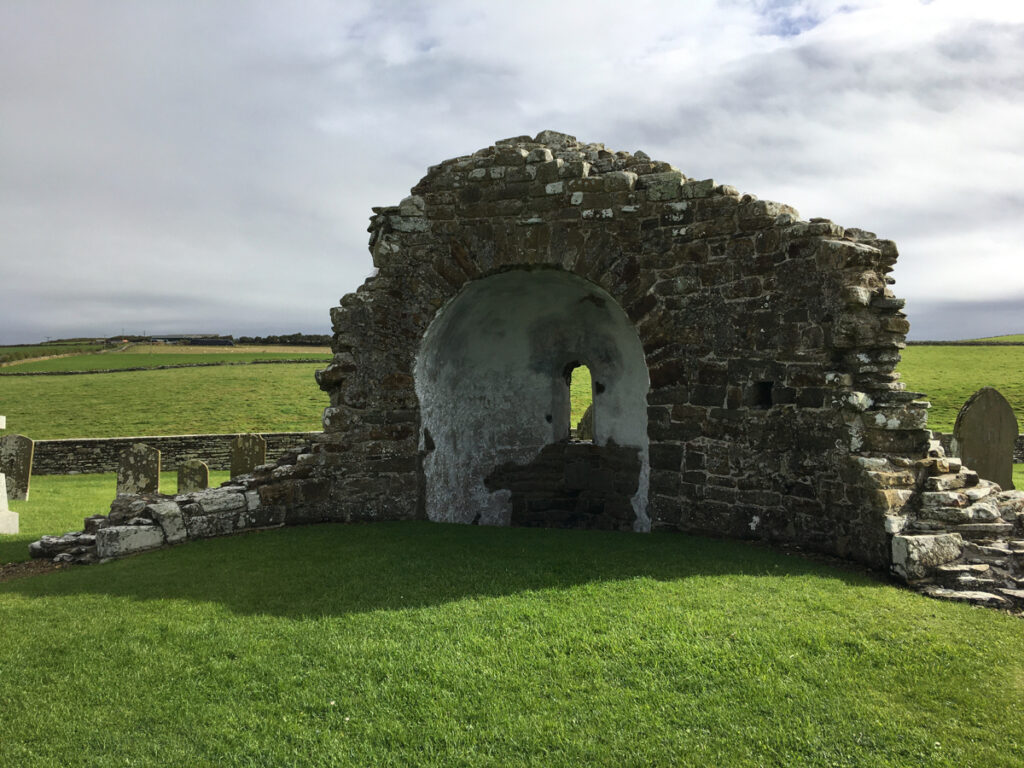
Above: fragment of nave and apse in the Round Church
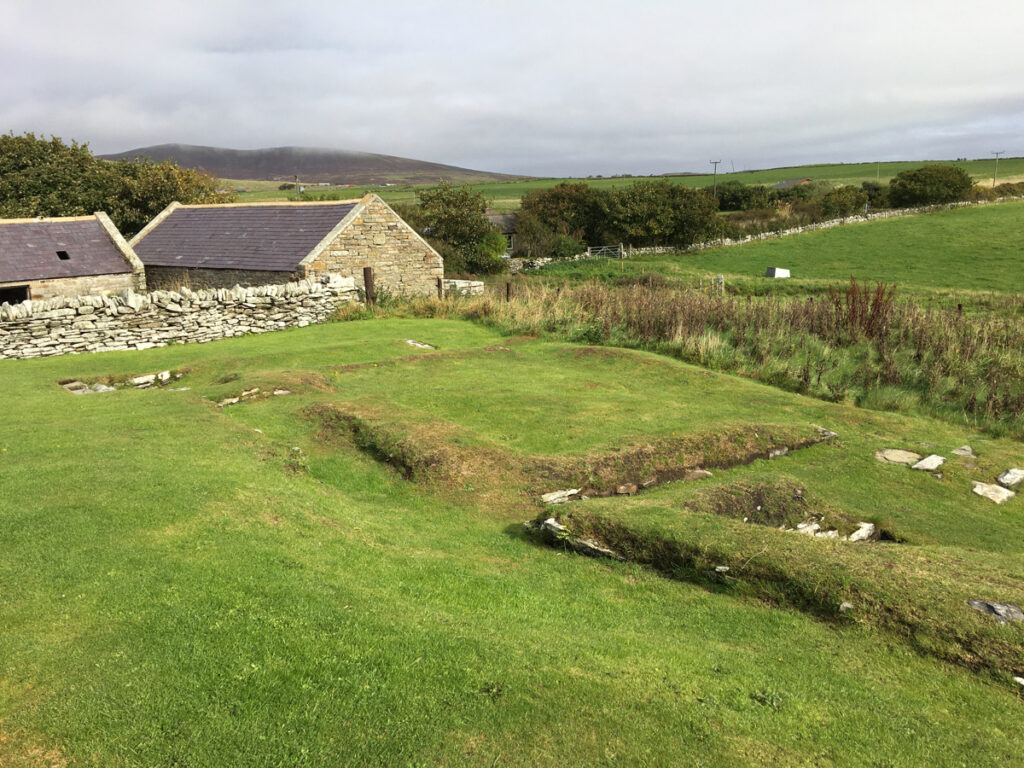
Above and below: traces of the Earl’s Bu
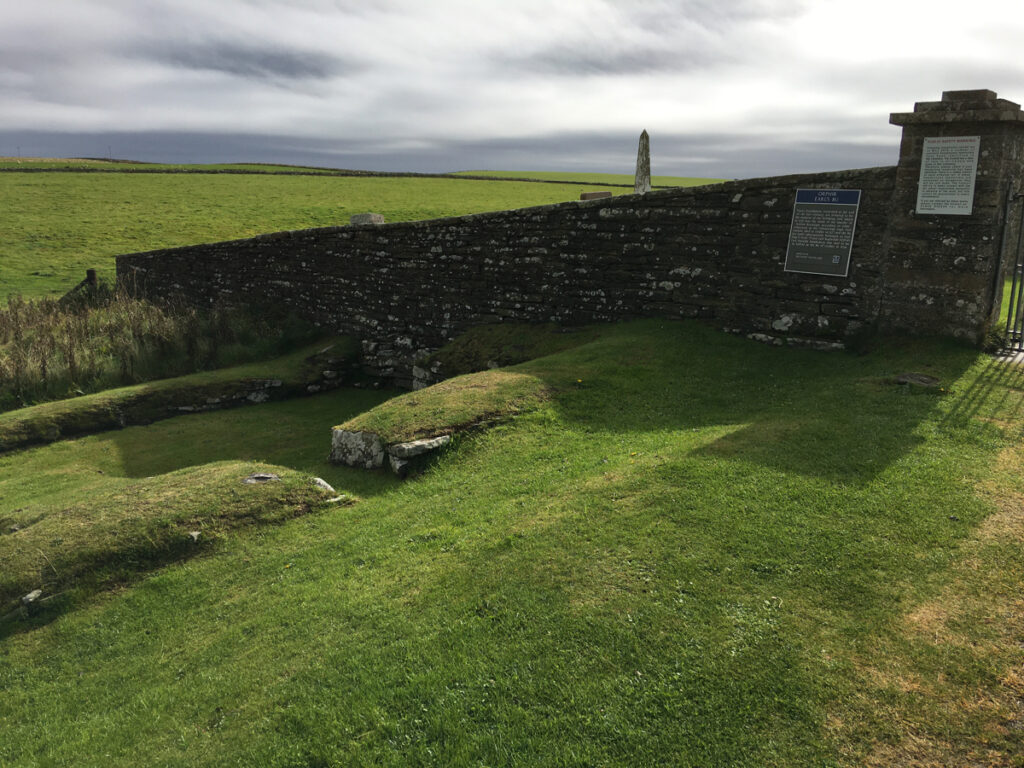
An information board at the site reveals that, because of its shape, the Round Church is unique among surviving Scottish medieval churches. It was in use until 1705, when a new church was constructed just to the south-west. Then it functioned as a storage shed, and subsequently some of the stone was used for repairs to the new parish church. The illustration gives a good idea of what the old church might have looked like, with a small congregation inside. A flock of sheep are grazing around its walls and a group of travellers seem be debating whether to get on with their journey or wait until the end of service (a riskier option, I’d say).
–
Footnotes:
*I would assume that Paul’s mother was not Helga, or else what motive could she have had for poisoning one of her sons in preference to another? But stranger things happened in the Norse sagas.
This story occurs in the Orkneyinga Saga, a history of Orkney that is thought to have been compiled in the late 12th or early 13th century. The text is generally believed to be a mix of factual events and stories that have been either completely fabricated or embroidered upon; the distinction might perplex modern-day historians, but it probably didn’t worry the people of that era quite so much, when the boundary between history and legend was practically non-existent.
Reference:
- The Orkneyinga Saga, ed. Joseph Anderson, 1873
- A W Johnston, Saga-Book, Vol. 3 (Jan 1901-Dec 1903) via JSTOR
- Historic Environment Scotland
- St Magnus Way (PDF)
- Canmore (Round Church)



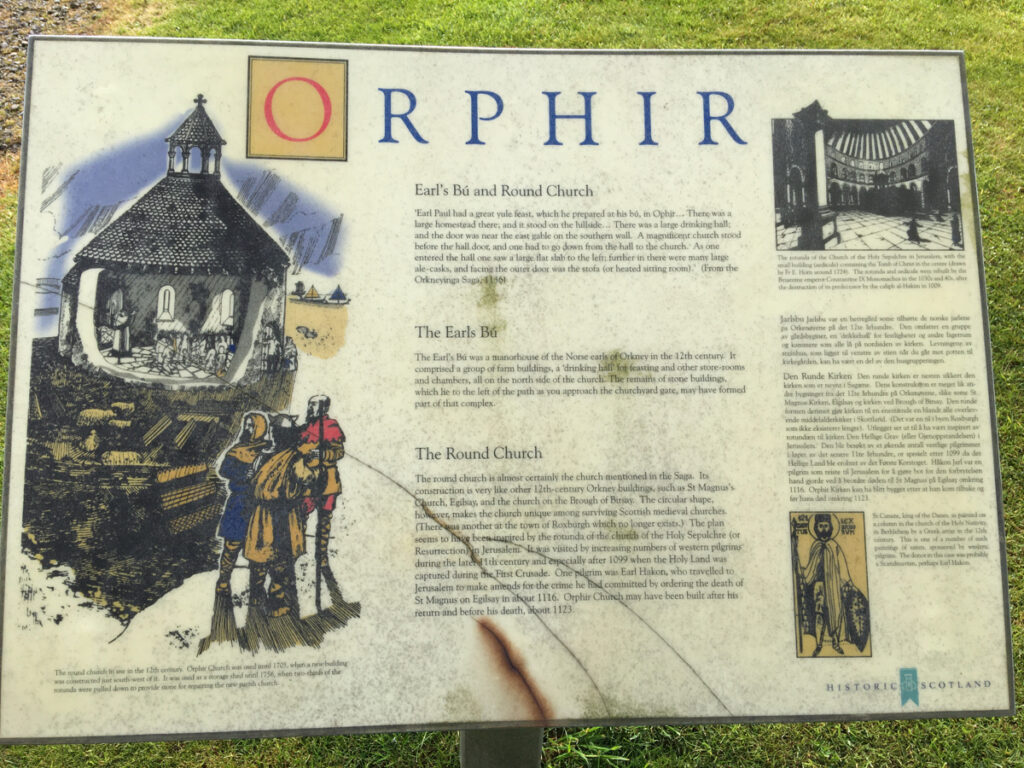
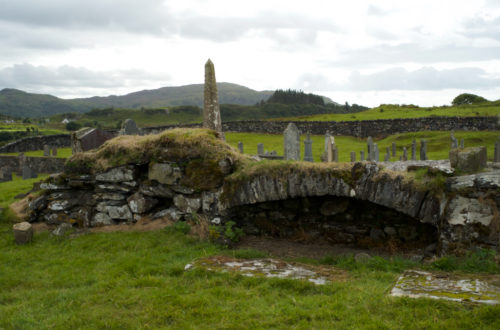
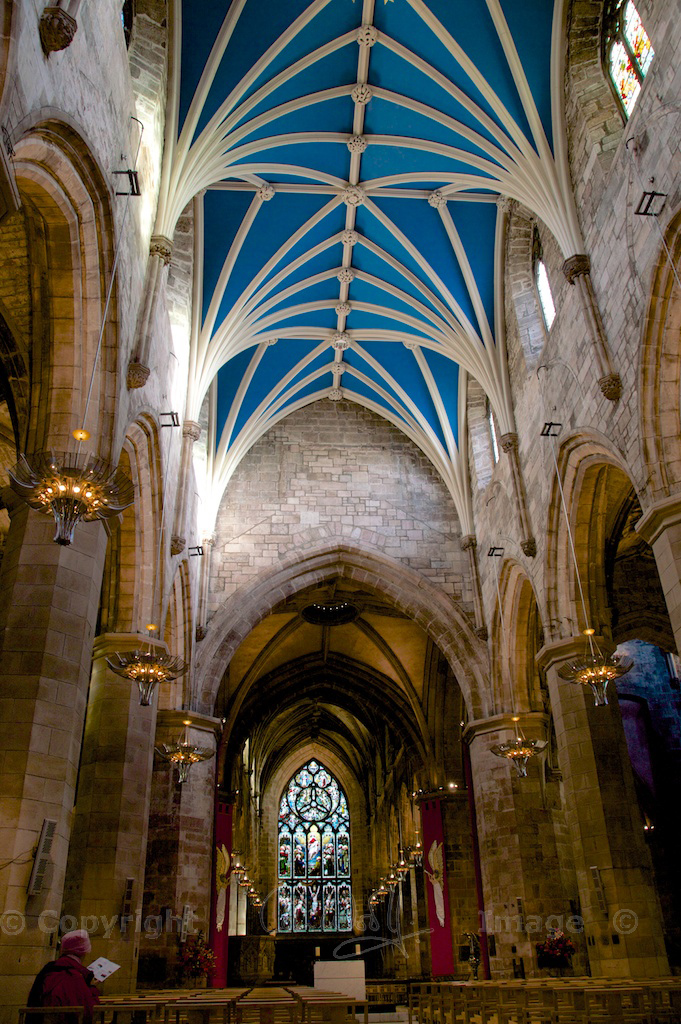
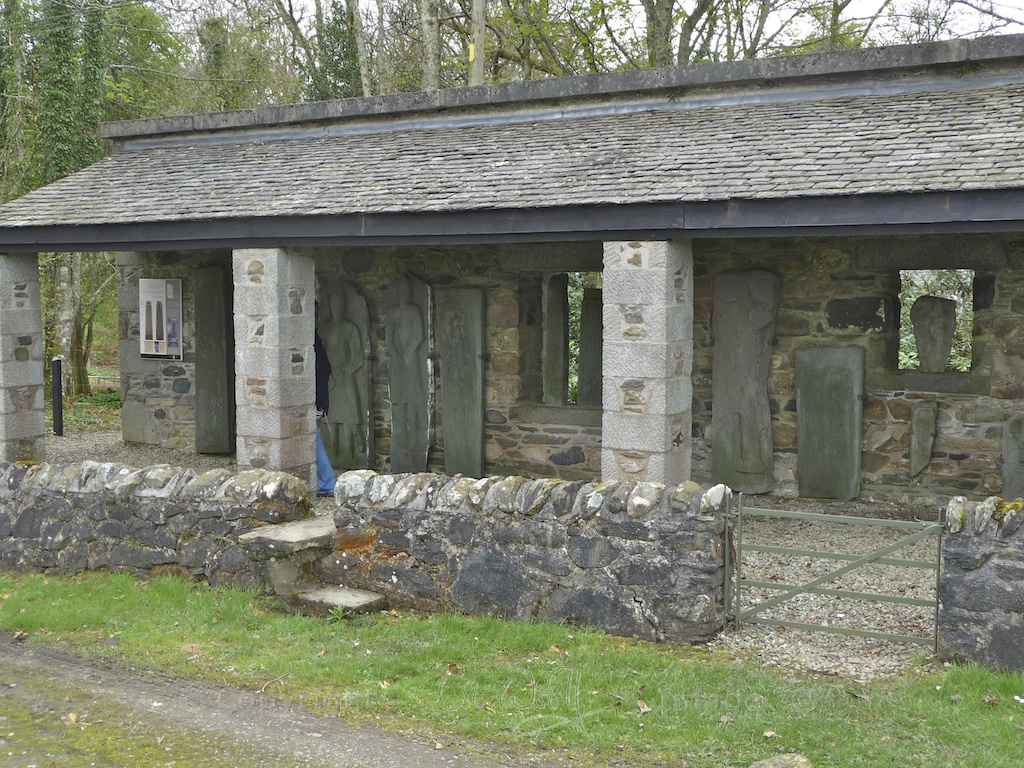
12 Comments
Annette Marie Schmitz
I always enjoy your information and pictures! Visiting this land is my fondest dream but it will only remain a dream, so I value this type of post. It makes me feel like I’m there! Thank you and may you and yours have the happiest of Holidays!
Jo Woolf
Thank you so much, Annette! I am really glad that you get an idea of these places through my posts and pictures. It’s wonderful to be able to share these stories. Thanks for your kind wishes, and the very same wishes to you over the festive season and for the New Year.
Finola Finlay
Jeepers – not sure I’ll sleep tonight after those jolly Christmas tales. Worse than Game of Thrones. Those Viking dudes!
Jo Woolf
Haha, I know! 😂 How would anyone have slept peacefully at that time? It makes me wonder. The only amazing thing is that enough people survived to produce the next generation.
Richard Miles
Hi Jo,
Thank you for another fascinating and informative tale from the Orkneys.Those Norsemen certainly lived life to the full.With your style of writing you bring the legends and tales to life.Keep it going and I look forward to your next post.
Have a good Christmas and a relaxing new year.
Richard Miles
Jo Woolf
Hi Richard, I’m so glad you enjoyed it! No messing about with these guys – if they didn’t like what you said, your time was well and truly up. It seems like the women didn’t have many scruples either, they were just slightly more subtle! 😂 My very best wishes to you too, for Christmas and New Year, and thank you for all your kind comments. Jo
Bob Hay.
Good story Jo. I was imagining garments jumping with fleas.
Jo Woolf
Thanks, Bob. Guess that was a more minor problem! 😂
davidoakesimages
Christmas stories with a difference. If you watch some of the TV Soaps at Christmas you may be forgiven for think we have changed little! As for any Christmas Jumper I may get I will check the label inside (is M&S safe ?). Seasons greetings to you and look forward to more of Hazel Tree in the New Year 🙂
Jo Woolf
That’s a good point about the soaps, David! Pretty much the same conflicts going on. I’d say M&S are fairly safe 😂 If they’d been around in the 12th century all these issues might have been avoided! Thank you very much for your greetings and very best wishes to you too, for Christmas and the New Year. Thank you for all your comments!
Lee McAulay
This all sounds dreadfully familiar if you’ve watched any of those true crime programmes, people stabbing each other over the same sort of slights, especially when they’ve all been drinking…
But Orphir is such a lovely word, isn’t it?
Jo Woolf
I stay away from those kind of programmes, Lee! Human nature is pretty constant, both good and bad, it’s the historical context that I find so appealing. Yes, Orphir is an evocative name. Not sure if it’s partly because of John Masefield: ‘Quinquereme of Nineveh from distant Ophir’ – different place and different spelling but both sound exotic!